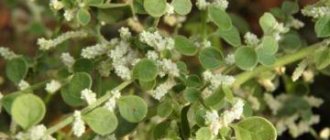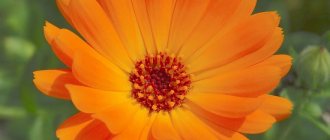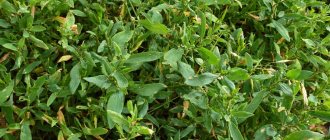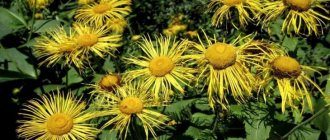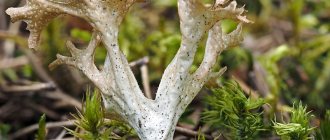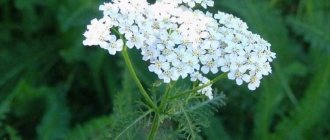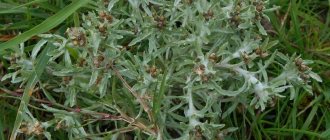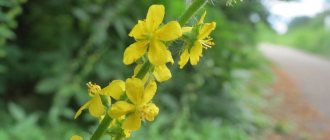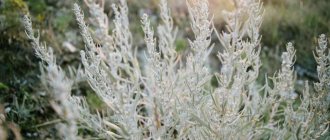Inflamed and enlarged venous nodes of the rectal plexus, their prolapse, as well as associated bleeding, are observed in 15% of the world's population.
Numerous methods of treating hemorrhoids, both conservative and surgical, allow you to completely get rid of this delicate problem. An important role is played by folk remedies, which can be part of complex therapy or used independently.
Knotweed for hemorrhoids is one of the most effective and popular remedies for strengthening the walls of blood vessels, stopping bleeding and eliminating constipation. In addition, the plant contains numerous components that have a positive effect on the general condition of the body.
General information
Knotweed (also called kidney grass, hemorrhoid grass, bitterweed, flea grass) is a member of the buckwheat family. It reaches a height of up to one meter. The leaves are entire, lancelet-shaped with a reddish spot in the middle, which disappears during drying. Small pink or white flowers are collected in inflorescences. The fruit has the shape of a black shiny nut about 2 mm in size.
Knotweed can be found on pharmacy shelves in the form of a tincture or as crushed plant material used in the preparation of decoctions or tinctures. It is used for local exposure and internal use.
This is a fairly common plant that you can collect yourself. The habitat of the grass is quite extensive - low-lying meadows, banks of reservoirs, silt deposits in river valleys, damp forest paths, temporarily moist areas.
If desired, it is possible to grow it independently, by sowing fruits - nuts - directly into the ground in late winter.
The above-ground part of the grass is collected during the flowering period (June-October). Shoots approximately 40 cm long are cut. Next, they are cleaned of dirt and damaged parts and dried in a ventilated area. Stored in paper bags or plywood boxes for no more than 2 years.
Properly prepared raw materials have a bitter taste and are odorless.
If the plant acquires an odor or becomes too dark in color, it means that the drying or storage conditions have been violated and should not be consumed.
Do not forget that it is better to entrust the collection of herbs to an experienced herbalist or buy at a pharmacy.
Knotweed is used as a raw material for medicines
Knotweed in medicine
Knotweed (Polygonumpersicaria) is a plant of the buckwheat family (Polygonaceae), “persicaria” (translated from Latin as “peach”) - due to the striking similarity of the leaves of this knotweed to the leaves of peach.
Other names of the plant: kidney grass - since this plant was mainly used in the treatment of hemorrhoids (the ancient name for this disease is kidney grass); flea grass; goose house; gorkushnik; spotted persicaria or spotted knotweed; woman's bitterweed; pochechuynik, etc.
Biological description of knotweed: this annual herbaceous plant with a tap root has a straight or ascending weakly branched thin stem 20-100 cm in height, with slightly thickened nodes. Leaves are 8-10 cm long, glabrous, alternate, lanceolate, long, pointed, wedge-shaped-narrowed at the base, entire, almost sessile or narrowed into a short petiole, often with a reddish-brown spot on top (a distinctive feature from other highlanders); the stipules grow together into a narrow tube - a bell, which fits rather tightly to the stem, is covered with pressed hairs, membranous, narrow, with long cilia along the upper edge. The flowers are pink, less often whitish (often of different colors on the same plant), small, collected in dense cylindrical spike-shaped inflorescences at the top of the stem and axillary branches, 2-3 cm long and less than 1 cm wide, no smell, bitter taste; six stamens, pistil with two or three styles fused at the base; corolla-shaped five-membered perianth without glandular pubescence; pedicels are jointed in the form of a scar, which is why the fruits easily fall off when ripe. The fruits are broadly ovoid, shiny, black, flat, biconvex or triangular nuts, covered with a membranous perianth, about 2 mm long. It blooms from June to September, the fruits ripen from July to October. Propagated by seeds.
Habitat and distribution of the knotweed: it grows in damp meadows, along the banks of reservoirs and on the outskirts of swamps, as a weed in fields, in gardens and orchards, in alder thickets and ravines. It grows in the European part of the CIS, in the Caucasus, in the southern regions of Siberia and the Far East, in Central Asia, and has adapted to the climatic conditions of North America, having been accidentally introduced to this continent.
Harvesting and storage: The leafy flowering tops called “kidney herb – Herba Persicariae” are used for medicinal purposes. Raw materials are harvested during flowering in July-August, cutting off the upper parts of the shoots at a distance of 15-25 cm from the soil surface, without coarse lower stems. If the grass is thick, the plants can be mowed with a scythe. Several well-developed plants are left for seed propagation.
When collecting raw materials, you need to be very careful, pay attention to the distinctive features of the knotweed, so as not to confuse it with similar species - rough knotweed and flaxseed knotweed. Rough knotweed is distinguished by the presence of dense glandular pubescence on the upper part of the stem, pedicels and perianth; leaves, densely pubescent on the underside or with pinpoint glands; wide bells that do not fit tightly to the stem, bare or with cobwebby pubescence; round-ovate fruitlets, with indentations on both sides. Flaxseed knotweed can be easily distinguished by the absence of a rib-like joint on the peduncle, 5 stamens, perianth that does not completely cover the fruit, and indentations on both sides of the fruit. It is found only in flax crops, so the likelihood of confusing these species is not very high. Inexperienced foragers may also mistake peppered knotweed and small knotweed for knotweed. Peppermint knotweed has a thin spike and a sharp, pungent taste, while small knotweed is distinguished by a thin spike-shaped raceme, smaller plant size, and 5 stamens.
Dry the collected herbs not in the open sun, but in a dark and well-ventilated place (in attics, under sheds with good ventilation). The raw materials are laid out in a thin layer and mixed. Since the raw material turns black during slow drying, it is preferable to dry it in dryers at a temperature of 40-50°C. Properly prepared raw materials have a bitter taste and no odor. The color of the stems and leaves should remain green (the brown spot on the leaves disappears when dried), the bells should remain brownish, and the flowers should be pink. Dry herbs are crushed and stored in dry, well-ventilated areas, preferably in a closed paper bag. Shelf life – 24 months.
Chemical composition: Polygonum is rich in tannins - phlobaphenes, which have antibacterial properties, tannins; organic acids – gallic acid has antioxidant properties, and butyric acid is used in the food industry and perfumery; Polygonum also contains: essential oil (0.05%) with a mild laxative effect; flavonoids (rutin, hyperoside, avicularin) are powerful natural antioxidants that prevent disturbances in the regulation of the normal cell cycle and slow down the development of inflammation; a lot of vitamin K (hemostatic effect), ascorbic acid up to 1%; pectins, as well as minerals, calcium oxalate (in the form of druses - fused crystals); phenol glycosides – have a disinfectant effect; flavone persicarin; mucus; Sahara. Anthraquinone compounds were found in the roots of the knotweed. This is a poisonous plant!
Pharmacological properties: the high content of tannins in knotweed explains its effectiveness in the fight against hemorrhoids, since these substances help stop bleeding, dry out ulcers on the mucous membrane of the rectum and on the walls of hemorrhoids, relieve inflammation and eliminate swelling, itching and burning . The essential oils of this plant have a mild laxative effect, helping to relieve constipation, which provokes the development of hemorrhoids. Medicines from this plant enhance cardiac activity, constrict blood vessels without affecting blood pressure, increase contraction of the muscles of the intestines and uterus, increase blood viscosity and coagulability, and have a laxative and diuretic effect.
Use in folk medicine: used as a hemostatic agent for colds, venereal diseases, against bedbugs, for hemorrhoids and externally for healing wounds and ulcers, for the treatment of lichens and skin rashes, for strengthening gums during scurvy, periodontal disease, gargling for laryngitis and sore throat , for headaches, apply fresh grass to the back of the head, instead of mustard plasters for radiculitis. In folk medicine in some countries, it is additionally prescribed for the treatment of tumors of various etiologies, including stomach cancer.
Dosage forms and recipes:
Infusion
To treat hemorrhoids, crushed herbs are poured with boiling water at the rate of 500 ml per 2 tablespoons of raw material. The resulting mixture is infused overnight and filtered in the morning. Over the next day, drink an infusion of 50 ml at regular intervals.
Decoction
An effective remedy for hemorrhoidal bleeding is prepared as follows: 4 tablespoons of raw material are poured into 500 ml of boiling water. Boil for about 40 minutes in a water bath, filter and cool. Use the decoction in the form of lotions (a gauze cloth soaked in the decoction is applied to the problem area) or for taking sitz baths (sitting in the decoction added to the bath for 10-15 minutes), as well as for washing after each visit to the toilet.
Poultices
Knotweed can also be used to prepare a poultice, which is given when there is no bleeding from the veins of the rectum. Poultices increase blood flow in the area of action, improve the outflow of blood from the hemorrhoidal venous plexuses, which helps eliminate swelling, inflammation and stop itching and pain. The warm herb remaining after straining when preparing a decoction or infusion can be used as a poultice. It is applied to the hemorrhoids and left until it cools completely.
Enemas
The above decoction recipe can also be used to prepare enemas. They gently and effectively cleanse the intestines and also have a healing effect. However, you should not do enemas often, because they can disrupt the normal microflora and worsen natural bowel movements.
Tincture
It is better to buy a ready-made tincture of kidney herb at a pharmacy. The traditional method of treating hemorrhoids involves taking the tincture orally, 40 drops 3 times a day before meals for 7-30 days to eliminate constipation and stop bleeding.
Ointment
The dried herb is ground into powder and mixed with regular baby cream. The resulting product has a significant therapeutic effect in lubricating external and internal hemorrhoids.
Contraindications: you must remember that in its pure form, renal knotweed should not be taken for a long time (no more than 10 days), since due to its ability to thicken the blood, there is a risk of varicose veins. Contraindicated for the treatment of pregnant women, with thrombosed hemorrhoids, thrombophlebitis and with a tendency to thrombosis. This plant should not be used to treat hemorrhoids in acute diseases of the urinary organs. It should be remembered that knotweed is a poisonous plant, so it should be used with extreme caution and only after consulting a doctor!
Compound
The positive effect in the treatment of hemorrhoids with knotweed is achieved thanks to the following contained in it:
- Vitamin C, which has a beneficial effect on blood vessels, reduces their permeability and fragility. Fights inflammatory processes in hemorrhoids. Eliminates bleeding. Has an antioxidant effect. Increases the body's protective functions.
- Vitamin K, which shows its positive effects during bleeding. Helps stabilize blood viscosity. Participates in the production of platelets.
- Essential oils that have a mild laxative effect. This property of the plant is especially important for constipation in order to avoid injury to hemorrhoids.
- Flavonoids (avicularin, hyperoside, quercitrin, isoquercitrin), which strengthen the walls of blood vessels and increase their elasticity. Helps strengthen the immune system. They have anti-inflammatory, antioxidant, decongestant, wound-healing and bactericidal effects.
- Tannins, which dry wounds and speed up their healing. Prevents the destruction of damaged tissues.
- Organic acids (acetic, malic, etc.), which maintain the acid-base balance in the body at the proper level. They create ideal conditions for the development of healthy microflora in the intestines. Promotes its active work and regular emptying.
- Routine, which has anti-inflammatory, analgesic, sedative and antioxidant effects. Helps enhance the therapeutic effect of vitamin C. Reduces the risk of allergies to medications used in the treatment of hemorrhoids. Accelerates tissue restoration.
- Tannins, which relieve itching. They have anti-inflammatory, antimicrobial and healing effects. They exhibit tanning properties. Normalize blood clotting. Strengthens blood vessels. Stop bleeding.
- Pectins that improve blood circulation. Normalizes metabolic rate. Removes toxins and other harmful substances from the body. Normalize intestinal microflora.
- Macro- and microelements: nickel, selenium, vanadium, barium, aluminum, chromium, cobalt, zinc, copper, manganese, lead, boron, magnesium, potassium, iron, calcium.
Properties
Knotweed has all the properties necessary for the treatment of hemorrhoids:
- normalizes the functioning of the gastrointestinal tract and eliminates difficulties in normal bowel movements;
- reduces or completely eliminates bleeding from the anus. Stabilizes blood viscosity;
- strengthens the walls of blood vessels, reduces their permeability and gives elasticity;
- prevents inflammatory processes;
- eliminates burning sensation, itching and swelling;
- promotes wound healing;
- has antioxidant and bactericidal effects;
- strengthens the body's defenses.
We must not forget that any remedies, including folk remedies, should be used only after consultation with a proctologist.
Recipes for hemorrhoids have been used for a long time and have not lost their relevance today.
In addition, the miracle remedy does an excellent job:
- with periodontal disease;
- stomatitis;
- dermatological, colds and venereal diseases;
- rheumatism and radiculitis;
- headaches;
- wounds and ulcers;
- urolithiasis;
- uterine bleeding, etc.
When preparing medicines from knotweed, it is necessary to observe the exact dosage of the components, since the plant is considered poisonous.
Application
In medicine: Knotweed preparations have a hemostatic and mild laxative effect for chronic constipation (including atonic and spastic) and hemorrhoids. With systematic use of plant preparations, hemorrhoids stop bleeding and become smaller, and intestinal activity improves.
Polygonum renalum increases the tone of the uterus. The infusion is used in gynecological practice for uterine bleeding (for example, for uterine atony, uterine fibromatosis), for colpitis (for douching).
Medicines based on Polygonum renalum have a beneficial effect on the cardiovascular system: they enhance heart function, constrict blood vessels without having a noticeable effect on blood pressure, and increase blood viscosity and coagulability. Also, plant preparations have wound-healing, anthelmintic, astringent, diuretic, anti-inflammatory and analgesic effects. In urology, infusion of Polygonum renalis is used for cystitis, urolithiasis, and bladder cancer (for symptomatic treatment).
In folk medicine, preparations of knotweed are used in the treatment of various tumors, including stomach cancer. The fresh herb of the plant, ground into a paste, is used as a local irritant for radiculitis, rheumatism, and gout. For headaches, a paste of fresh knotweed herb or a poultice from the herb of the plant is applied to the back of the head.
A decoction of the herb or the juice of fresh herb is used externally for lotions and rinsing in the treatment of ulcers, lichens, wounds, and rashes. The decoction is also used to gargle for sore throat and laryngitis. To strengthen the gums in case of periodontal disease and scurvy, as well as in case of toothache, rinse the mouth with an infusion or decoction of Polygonum.
In other areas: Knotweed is a good honey plant. The plant is used to dye fabrics yellow. Ornamental and vitamin-rich plant.
Tinctures
The components of any tincture are purified medical ethyl alcohol and a dried plant. Alcohol is an auxiliary element and promotes rapid penetration of medicinal substances into the blood and longer storage of the product. The main element is a plant drenched in alcohol.
One of the variants of knotweed tincture produced by the pharmacological industry
The shelf life of tinctures can reach up to 3 years, which significantly exceeds the shelf life of decoctions and infusions. As a rule, they should be kept in a dark container in a cool place.
Considering the possible side effects caused by knotweed, it is not recommended to make an alcohol tincture from the plant yourself.
It is better to resort to a pharmaceutical product, which is used orally before eating food, 40 drops 3 times a day. The course of treatment can last 7–30 days.
Due to the negative effects of alcohol on the body, alcohol tinctures are used with caution or are prohibited:
- for diseases of the cardiovascular system in the acute period;
- pathologies of the gastrointestinal tract;
- malfunction of the liver;
- some infectious diseases.
Before using alcohol tincture, it is necessary to consult a doctor and carefully study the instructions for use of the product.
Infusions
Infusions have good effectiveness in the treatment of hemorrhoids, however, unlike alcohol tinctures, they are stored in a cool place for no more than two days.
To prepare the product, porcelain, glass or enamel dishes are used.
The raw material is fresh or dried herbs (stems, leaves, flowers), collected independently, as well as purchased at a pharmacy or market.
- Pour boiling water (0.5 l) over the knotweed (2 tablespoons). Leave for 8 hours. Drink 50 ml at regular intervals throughout the day. The preparation of a new product should be daily;
- pour boiling water (100 g) over the plant (1 tablespoon). Leave for 20–25 minutes. Strain. Use three times a day before meals;
- pour the crushed raw materials (2 tablespoons) with boiling water (0.5 l). Leave in a thermos for 2 hours. Next, strain. Take 1/3 cup in 30 minutes. before meals 4 times a day;
- Pour boiling water (0.5 l) over chopped knotweed (2 tablespoons), leave for 12 hours, strain. Use 3 tbsp daily. spoons on an empty stomach.
All infusion recipes have the same effects and can be used at the request of the patient.
Medicinal properties
Hippocrates, Dioscorides, and Galen mention the medicinal properties of knotweed. Dosage forms are used in India, Bulgaria, Poland and other countries. The name renal herb comes from the old name for hemorrhoids - renal herb.
Knotweed is an annual plant. Its stem is bare, the leaves are not toothed, oblong, with veins running sideways from the base, from below; large, and smaller at the top. The flowers are collected in spike-shaped inflorescences and emerge from the axils of the leaves. Knotweed can easily be mixed with another plant from the buckwheat family, oxalic buckwheat, but this is not dangerous, since both plants are harmless and have almost the same medicinal uses.
To prepare the medicine, the above-ground part of the plant is used: stems, leaves, inflorescences .
- The picked grass is thoroughly dried (if dried correctly, the resulting mass will retain its green color) and crushed.
- Then comes the turn of preparing the infusion. Two teaspoons of the herb are poured with water (about 0.5 liters) and boiled over low heat.
- After bringing to a boil, keep the pan on the fire for another 15 minutes, then place it in a warm and dry place for 2 hours. The infused solution is filtered and becomes ready for use.
- You need to drink the infusion in portions of 100-150 grams half an hour before each meal.
Knotweed can also be used in another form: as a poultice . The remains from straining the infusion can be used as such a medicine. Hot steamed herb is applied to the hemorrhoids and remains there until it cools.
Take knotweed in strict accordance with our recipes - and you will see that this herb bears its name for a reason, being able to defeat an unpleasant illness.
Highlander
Decoction for hemorrhoids for oral administration
In herbal medicine, that is, herbal treatment, there are several ways to get rid of the hated hemorrhoids. One of them is the use of hemorrhoid herb decoction internally.
To do this you need:
- Take 2 teaspoons (without a slide) of dry herb, pour 500 ml of water over them, put on low heat, the decoction should boil for 15 minutes.
- Then it is wrapped for 2 hours so that it is thoroughly infused.
- The cooled and strained broth is used 0.5 cups half an hour before meals.
- Reception is carried out 3-4 times a day.
Infusion for hemorrhoids
You can prepare an infusion of herbs, for this:
- Place 2 tablespoons of dry herbs in a thermos and pour half a liter of boiling water into it.
- Leave for two hours, cool, filter and drink a third of a glass 20 minutes before meals.
- Do this 3-4 times a day.
- This infusion is a good hemostatic agent.
Liquid extract
In pharmacies you can buy a liquid extract of the plant in alcohol; in this case, knotweed is used as a mild laxative. To normalize stool, use 40 drops of liquid extract three times a day before meals. The course of treatment can last from a week to three weeks.
Knotweed herb can be included in mixtures for baths against hemorrhoids, preparations for enemas, and used in a mixture with other herbs to make candles at home.
When treating hemorrhoids, a combination of several methods gives the best results compared to monotherapy.
The chemical properties of hemorrhoid herb have been studied to some extent, but it has long been used only in folk medicine, mainly for hemorrhoids (hence its name). Preparations from this plant are also used as a diuretic .
Externally, knotweed is sometimes used as a mustard plaster: fresh crushed grass, for example, is applied to the back of the head, and the headache subsides.
Mode of application. Decoction: one part herb to 20 parts boiling water, leave for 20 minutes; take one tablespoon three times a day.
Decoctions
In terms of their effect, decoctions of knotweed are not inferior to infusions; however, during preparation, the plant is subjected to a short heat treatment.
The place and shelf life of decoctions does not differ from infusions.
- Pour boiling water (0.5 l) over dry crushed herb (1 tablespoon) and keep on low heat for 15 minutes. Next, wrap it up. After 2 hours, strain and cool. Divide the broth into equal portions. Drink at regular intervals throughout the day;
- pour boiling water (1.5 cups) over the grass (2g), boil. Leave for 2 hours. Strain. Use ½ cup three times a day;
- Pour vegetable raw materials (2 tablespoons) with hot water (200 ml), keep in a water bath for 15 minutes, stir constantly. Cool 45 minutes. and strain. Dilute with boiled water to 200 ml. Take 1 tbsp warm decoction. spoon 3 times a day before meals.
Blank
The grass (leaves, stems, flowers) of knotweed is harvested during the flowering period by cutting off the upper parts of the plants without the rough lower parts, which have practically no leaves. When harvesting, leave at least 2-3 plants for every 2-3 square meters. thickets. admixture when harvesting other types of knotweed, in particular rough, flax and knotty knotweed, is not allowed.
The cut grass is sorted out to remove impurities. Dry it in the fresh air under a canopy, spreading it in a layer of no more than 5 cm and stirring frequently, or with artificial heat at a temperature not exceeding 40 °C. Knotweed must be dried quickly so that the grass does not turn black and lose its healing properties. When properly dried, the leaves remain green (spots on the leaves may disappear), the bells remain brownish, and the inflorescences remain pink. The raw material is odorless and tastes bitter. Shelf life – 2 years.
Compresses
Compresses from knotweed help not only to treat chronic hemorrhoids, but can also eliminate the symptoms of the disease in the acute period.
The procedure promotes:
- relieving pain, swelling, itching and burning, inflammation;
- nutrition of damaged areas;
- tissue regeneration and, as a result, recovery.
To prepare a compress, you need to fold a piece of gauze several times, moisten it in an infusion or decoction and apply it to the sore spot. The exposure time can vary from several minutes to several hours at the request of the patient.
Compresses can be used in the form of poultices (warm) or lotions (cold).
Gadgets:
- cause spasm of blood vessels, which stops bleeding;
- freeze the nerve endings, resulting in the cessation of acute pain;
- get rid of dying tissue.
Contraindications to the use of ice compresses are:
- severe infectious diseases;
- inflammatory processes in the pelvis.
As it warms up, the lotions are replaced with new ones.
Poultices:
- help eliminate discomfort, itching and burning;
- reduce inflammatory processes,
- normalize blood circulation.
Do not use for bleeding.
If the poultice begins to cool, it should be changed to warm.
As compresses, you can use not only direct decoctions or infusions, but also the herbs that remain during the squeezing process.
Enema
Decoctions of knotweed can be used to cleanse the intestines and eliminate symptoms of the disease using enemas.
For hemorrhoids, it is recommended to resort to microenemas not exceeding a volume of 100 g
This procedure has a positive effect on both external and internal forms of hemorrhoids:
- softens stool and promotes their removal, which prevents constipation;
- eliminates inflammatory processes;
- stops bleeding;
- improves the regenerative abilities of affected tissues.
The procedure is carried out no more than 2 times a week, due to the risk of dysbacteriosis and addiction.
If administering the enema is difficult, the tip is lubricated with baby cream or Vaseline.
Baths
A decoction of knotweed can be used to prepare baths for hemorrhoids, which have a local effect and have a direct effect on the affected area. To carry out the procedure, you need a basin or a special medical bath into which the medicine is poured. In addition, it is necessary to use only boiled liquids, especially during bleeding.
This treatment method is used at any stage of development of pathological processes and has the following effects:
- relieves pain;
- stops bleeding;
- regenerates damaged tissues;
- facilitates bowel movements;
- fights inflammatory processes;
- strengthens blood vessels;
- cleanses the anal area of pathological bacteria and microorganisms.
The effect of baths on the body directly depends on their temperature:
- Hot (the temperature of the decoction should not be scalding). They have an antiseptic and anti-inflammatory effect. Relieves pain. They are used in the first two stages of the disease and during the period of remission. Prohibited for bleeding, thrombosis and strangulation, as well as during pregnancy.
- Cool. Eliminate pain, stop bleeding and have an antibacterial effect. Prohibited for inflammatory diseases of the genitourinary organs or infectious diseases.
- Warm. They have a regenerating effect. Strengthens blood vessels. Relieves the feeling of discomfort. Promotes tissue restoration. Used in the postoperative period. At the first stage of hemorrhoids, they can completely get rid of the problem. Most often, baths of this temperature are used. They have practically no contraindications.
- Steam (smoke), during which the pathological area is exposed to steam. They have an analgesic and relaxing effect.
If a warm or hot decoction is used, the anal area is immersed in it for 15–30 minutes, if cold - for no more than 7 minutes, the time of exposure to steam baths is until the steam completely disappears.
The course of treatment is 1–2 weeks, after a break of 3–4 days the treatment is repeated. Baths should be taken up to 3 times a day.
After the procedure, the anal area must be blotted with a soft cloth or terry towel and treated with anti-hemorrhoids (rosehip oil, coconut oil, etc.).
It is possible to wipe the anal area with the broth after hygienic procedures or simply wash yourself with it.
For sitz baths, the following recipe is recommended: Polygonum (4-5 tablespoons) pour boiling water (1/2 l) and boil in a water bath for half an hour. Before use, the product must be filtered and cooled to the required temperature.
Candles
A distinctive feature of suppositories for hemorrhoids is their direct effect on internal hemorrhoids, which is practically impossible when using compresses and baths.
The popularity of this treatment method is achieved due to:
- achieving results in a short period of time, due to their rapid penetration into the general bloodstream;
- minimal risk of allergic reactions;
- ease of use.
As a rule, suppositories are administered in the evening before bedtime after defecation and hygiene procedures. It is possible to use the product twice (morning and evening). In the morning, after inserting the suppository, you must remain in a lying position for 30–40 minutes.
Store rectal suppositories in a cool place to prevent them from melting.
The insertion of suppositories is carried out in a side lying position. The patient spreads the buttocks with one hand and places the product into the anus with the other. To prevent the drug from leaking, you must lie on your stomach for at least 30 minutes until it is completely dissolved. The course of treatment can last up to 1 month.
The release form of knotweed does not include rectal suppositories, however, you can prepare them yourself
To do this, you need to pour the strained decoction of the plant into special molds. As a last resort, you can use medical gloves by cutting off your fingers, filling them with decoctions and tying them with threads or ampoules of medicines. Candles containing meltable components are beautifully molded by hand. The prepared components must be placed in the freezer for at least 6–8 hours before freezing.
The diameter of self-made candles should be about 1 cm, length 2–3 cm, and cylindrical in shape.
Recipes:
- herbal decoction made according to any recipe) pour into molds and freeze;
- crushed knotweed (30g) mixed with liquid honey (1 tbsp), beeswax (1 tbsp) and olive oil (1 tbsp) until a dough consistency is obtained. Next, form candles;
- melt unsalted white lard over low heat, strain. Add a decoction of knotweed (3 tablespoons), a little starch and petroleum jelly to the resulting mass until a dough-like mixture is obtained. Pour into molds or make candles. To freeze.
Description
Knotweed is a herbaceous annual medicinal plant. It has a taproot. The stem of the gallbladder is single, erect or ascending, branched, knotty, from 10 to 110 cm in height.
The leaves are alternate, 5-11 cm long, approximately 2 cm wide. Short-petioled, almost sessile (petiole length 1-2 mm), with membranous, ciliated flares along the edge, tightly covering the stem. Lanceolate or linear-lanceolate, narrowed towards the base, with a wavy, short-pubescent solid edge, pointed, the top is green, often with a brown spot in the center, the bottom is grayish-green.
The flowers are small, bisexual, pink (less often white), collected at the tops of the branches and stems in dense, cylindrical, spike-shaped, short inflorescences (3 to 6 cm long, 0.8-1 cm wide). The perianth of each tiny flower consists of 4 or 5 petals, fused at the base. There are 6 stamens, the ovary is superior. Flowering of the knotweed continues from June to September.
The fruits are triangular or broadly ovoid black shiny nuts, approximately 2 mm in size, covered with a membranous perianth. Ripening – August–October. The species reproduces by seeds.
It grows near ponds and swamps, in ditches, in wet meadows, as a weed in vegetable gardens, orchards and fields, along roadsides. Hemorrhoid grass is moisture- and light-loving. Prefers acidic soils. The natural geographic range includes Central Asia, the Far East, China, Japan, and the plant is also found in Indonesia, the European part of Russia, Siberia, and the Caucasus. The plant is distributed almost everywhere in Europe: from Iceland and Greenland to Portugal; used as a medicinal plant in Poland, Belarus and Ukraine. The species was introduced to North America and naturalized throughout most of the mainland, and has also been found in Australia and New Zealand.
Plants with which knotweed is confused
The knotweed is quite similar in appearance to the rough knotweed (another name is sorrel-leaved knotweed) and flax knotweed. The distinctive features are not always clearly expressed, so it is necessary to collect the plant for medicinal purposes with extreme care. Rough knotweed, unlike hemorrhoid grass, has dense glandular pubescence on the peduncles, perianth and upper part of the stem; the lower part of the leaves is densely pubescent or with punctate glands; the bells of the rough knotweed are wide, with cobwebby pubescence or bare, and do not fit tightly to the stem; The fruits are round-ovoid, with indentations on both sides.
Flaxseed knotweed, unlike knotweed, has no scar-shaped articulation on its peduncle, it has 5 stamens, the perianth does not completely cover the fruit, and there are depressions on both sides of the fruit. Flax knotweed is found less frequently than kidney knotweed, mainly in flax crops, so the risk of confusing these species is not too great.
Ointments
Ointments based on knotweed are used for internal, external, chronic hemorrhoids, as well as its acute stage. Medicines perfectly eliminate the symptoms of the disease: pain, prolapsed hemorrhoids, bleeding, and also have anti-inflammatory, venotonic and antibacterial effects.
Ointments are a mild form of medication that has a local effect, which minimizes the occurrence of allergic reactions.
This form of drugs should be applied exclusively to a dry and clean affected surface. Weeping wounds are one of the few contraindications to their use.
The disadvantages of the product include its greasy base, which, if not completely absorbed, leads to greasy marks on the laundry.
The ointment is applied to hemorrhoidal cones and to the area around the anus up to 3 times a day, after each bowel movement and hygiene procedures.
For internal hemorrhoids, the product is inserted into the anus with a finger or a special device. You can also insert a cotton-gauze swab soaked in ointment into the rectum.
Recipes:
- mix any neutral cream (1 tube) or Vaseline with crushed knotweed (2 tablespoons);
- Mix melted butter and honey (100 g each) with high concentration knotweed decoction prepared according to any recipe or dried crushed herbs (2 tablespoons). After cooling, the product is ready for use. If necessary, honey is replaced with wax, and butter with vegetable oil.
Contraindications and side effects
Side effects when consuming knotweed are observed in rare cases and can manifest themselves in the form of:
- various allergic reactions;
- gastrointestinal disorders;
- dyspeptic manifestations: heartburn, feeling of heaviness in the stomach, etc.
The use of herbal remedies in any form is contraindicated:
- during pregnancy and breastfeeding;
- thrombosis of hemorrhoids or a tendency to them;
- diseases of the urinary and cardiovascular systems;
- diarrhea;
- individual intolerance to the components of the drug;
- increased blood clotting.
Pregnancy excludes the use of knotweed
Knotweed is an effective remedy for the treatment of hemorrhoids. However, if pathology occurs, it is necessary to consult a doctor. Only a specialist can prescribe effective treatment and prevent adverse consequences.
Is it true that pregnancy can cause hemorrhoids?
Unfortunately, hemorrhoids during pregnancy are a really common problem. The fact is that in pregnant women, the growing uterus puts pressure on the lower abdomen. It is the compression of the veins, combined with low physical activity, that leads to the development of hemorrhoids during pregnancy. Very often, the disease makes itself felt in the 2nd trimester of pregnancy, but in the presence of a hereditary predisposition, it manifests itself earlier - already from 10-15 weeks.
If you have problems with the intestines, we recommend treating them in advance, at the stage of
pregnancy planning .
You should not worry about hemorrhoids during pregnancy - they can be treated conservatively (without surgery). We recommend that you consult an experienced doctor: he will give recommendations on adjusting your diet, exercise, and prescribe safe medications.
Reviews
Elena Vasilyevna Gonchar, Belgorod, proctologist Timely treatment of the patient in almost all cases plays a decisive role in prescribing treatment. Folk remedies cope well with hemorrhoids in the initial stages, and they can also be used as part of complex treatment. Of the many herbs, knotweed is the one I recommend most often. The plant relieves almost all symptoms of hemorrhoids and can be used both as a remedy for local and internal effects.
Lidia Fedorovna, Pskov region, 72 years old Of all the people I know my age in the village, almost many have hemorrhoids. We practically never use medicines from pharmacies. We try to use grandmother's recipes. Let's go and collect knotweed. We make decoctions and compresses from it. Helps very well.
Vladimir Borisovich, Voronezh, 45 years old, businessman Hemorrhoids are a problem that I don’t want to talk about. I went to the doctor quite late, after discovering blood on my underwear. He refused the operation. He began to be treated with medications and at the same time take a tincture of polygonum. Constipation and bleeding stopped, hemorrhoids decreased. I'm happy with the product.
Maliciousness
Knotweed is a ruderal plant that infests crops of row crops, spring grains, winter crops and perennial grasses. A burdensome weed for crops in the middle zones of the southern taiga, deciduous and deciduous-spruce forests. There are frequent cases of crop contamination in the northern taiga zone. (Shlyakova E.V., 1982) (Nikitin V.V., 1983)
The harmfulness of a species in crops is expressed by:
- in the shading of cultivated crops;
- in a decrease in soil temperature;
- in the compaction of the root-containing layer;
- in increasing the consumption of nutrients;
- in activating the life activity of pathogens and insect pests;
- in complicating the operating conditions of agricultural machinery;
- in contamination of soil and seed material with fruits. (Masterov A.S., 2014)
